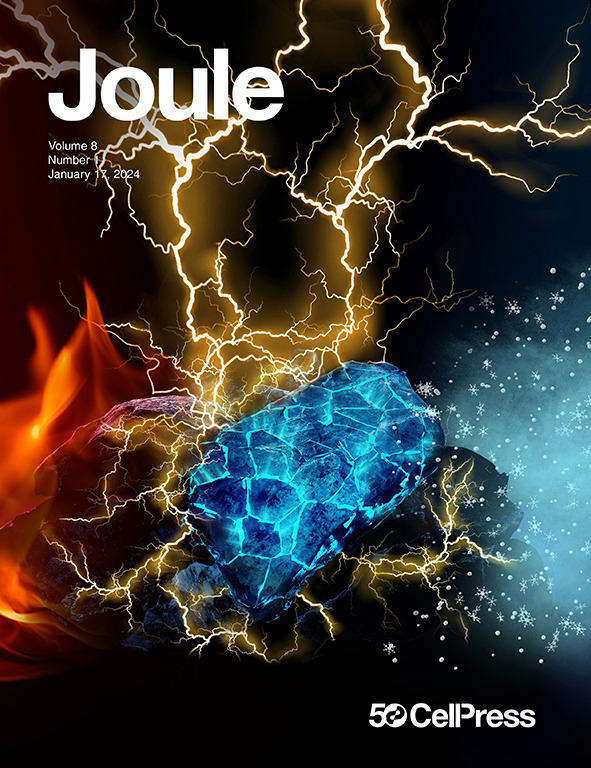高度可充电的水基锡金属混合离子电池
IF 38.6
1区 材料科学
Q1 CHEMISTRY, PHYSICAL
引用次数: 0
摘要
锡(Sn)金属由于其固有的抗析氢反应(HER)的特性,作为安全、可充电的水溶液锡金属电池(asb)的阳极具有很大的前景。然而,实际应用的主要挑战是锡沉积不均匀和Sn2+/Sn4+反应可逆性低。为了减轻这些挑战,我们从阳极和电解质两方面设计了asb。首先,一种亲锡镀银的垂直石墨烯(Ag-VG)载体改善了成核动力学和均匀的锡沉积。其次,双相H2O/离子液体(IL)电解质将Sn2+限制在水相内,抑制了阴极侧Sn4+的形成,并消除了离子交换膜的使用。双相电解质和Ag-VG主体与各种类型的阴极(在这里,卤素,LiCoO2和Li2MnO4)耦合以制备完整的asb。循环稳定性和库仑效率明显提高。这项工作强调了一个推进asb的简单策略。本文章由计算机程序翻译,如有差异,请以英文原文为准。
Highly rechargeable aqueous Sn-metal-based hybrid-ion batteries
Tin (Sn) metal, with its intrinsic resistance to the hydrogen evolution reaction (HER), holds great promise as an anode for safe and rechargeable aqueous Sn-metal batteries (ASBs). However, the major challenges for their practical deployment include uneven Sn deposition and low Sn2+/Sn4+ reaction reversibility. To mitigate these challenges, we design ASBs from both anode and electrolyte. First, a stannophilic silver-coated vertical graphene (Ag-VG) host improves the nucleation kinetics and uniform Sn deposition. Second, a biphasic H2O/ionic liquid (IL) electrolyte confines Sn2+ within the aqueous phase, suppressing the formation of Sn4+ at the cathode side and eliminating the usage of an ion exchange membrane. The biphasic electrolyte and Ag-VG host are coupled with various types of cathodes (herein, halogens, LiCoO2, and Li2MnO4) to fabricate full ASBs. Improved cycling stability and Coulombic efficiency are clearly observed. This work highlights a facile strategy for advancing ASBs.
求助全文
通过发布文献求助,成功后即可免费获取论文全文。
去求助
来源期刊

Joule
Energy-General Energy
CiteScore
53.10
自引率
2.00%
发文量
198
期刊介绍:
Joule is a sister journal to Cell that focuses on research, analysis, and ideas related to sustainable energy. It aims to address the global challenge of the need for more sustainable energy solutions. Joule is a forward-looking journal that bridges disciplines and scales of energy research. It connects researchers and analysts working on scientific, technical, economic, policy, and social challenges related to sustainable energy. The journal covers a wide range of energy research, from fundamental laboratory studies on energy conversion and storage to global-level analysis. Joule aims to highlight and amplify the implications, challenges, and opportunities of novel energy research for different groups in the field.
 求助内容:
求助内容: 应助结果提醒方式:
应助结果提醒方式:


